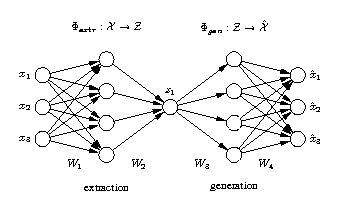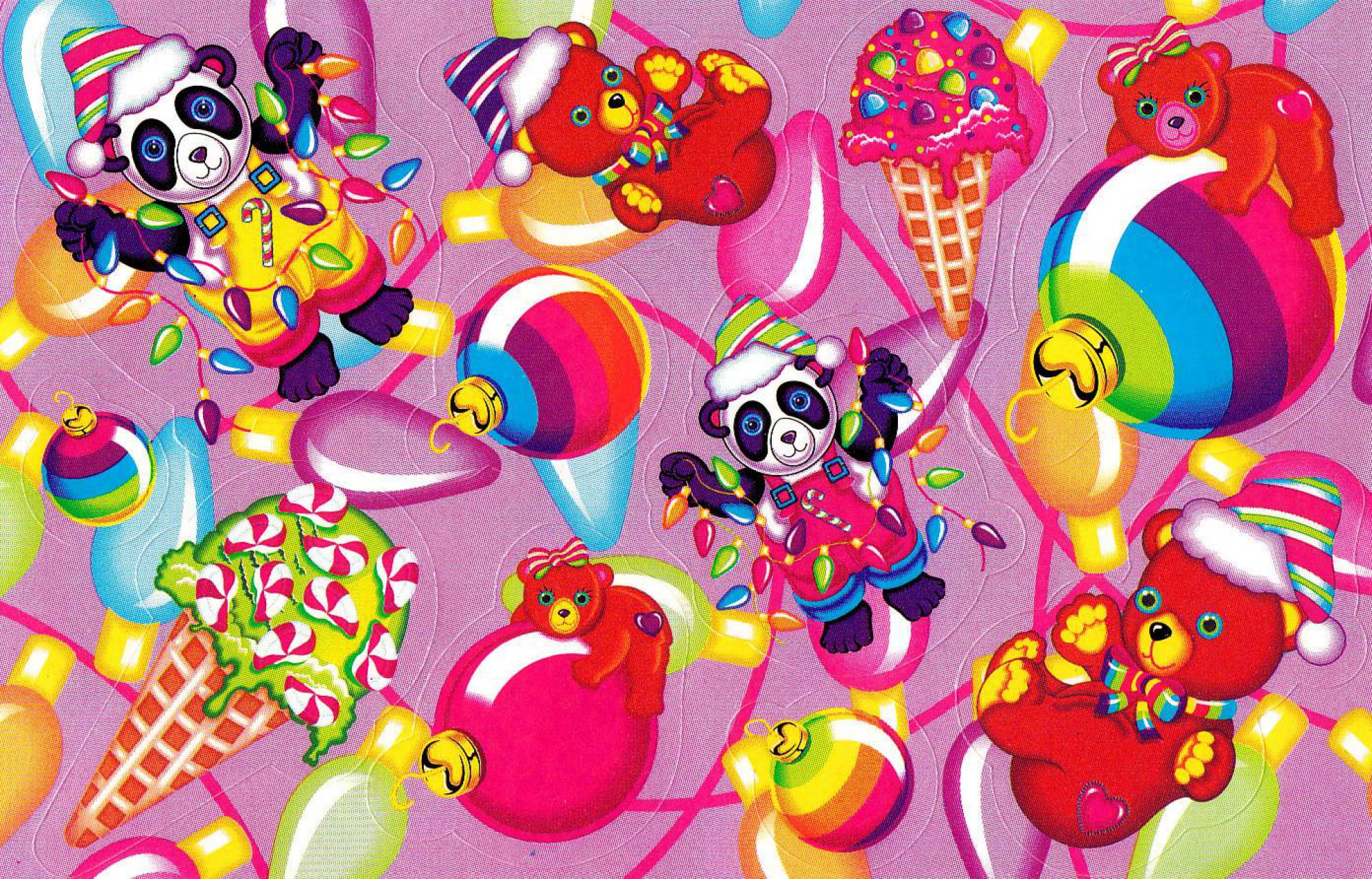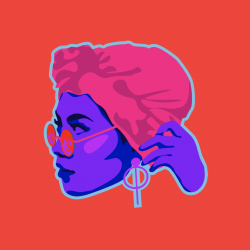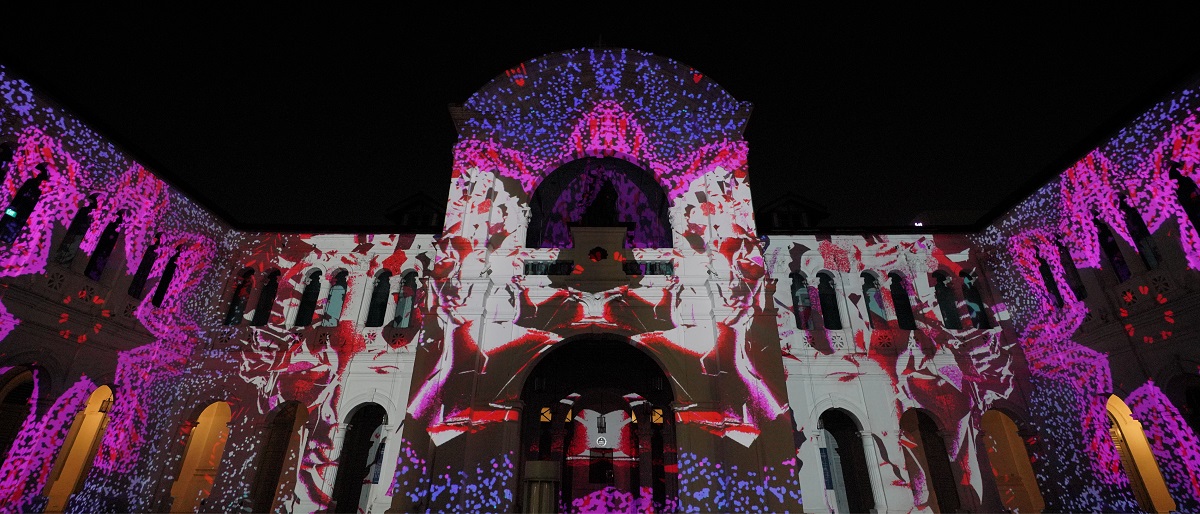Introduction
As of the 2010s, technology has been fully integrated in our daily lives (Wikipedia, 2018). Unlike the 1970s, we are currently living in a period of time where technology is accessible to everyone, everywhere, and any time. One of the most exciting technological developments during this period is Artificial Intelligence (AI), where computers are now slowly becoming their own entities. This new technology can act as a new medium, opening up endless possibilities in terms of art making. It can be classified as a type of hypermedia, as it has non-linear characteristics, acts as a metamedium, and breaks down the barriers of “traditional spatial and temporal boundaries”.
The work that struck me the most, one which I will be discussing in this essay, is Robbie Barrat’s surrealist AI Generated Nude Paintings, posted on 27th March 2018.
Here are some AI generated nude portraits I've been working on🍑
Usually the machine just paints people as blobs of flesh with tendrils and limbs randomly growing out – I think it's really surreal. I wonder if that's how machines see us… pic.twitter.com/tYgzCHGfse
— Robbie Barrat (@DrBeef_) March 27, 2018
I will also be using Deep Contact by Lynn Hershman as a comparison artwork, as a way to show the development of technology over 29 years, and different approaches of the same concepts that will be later discussed.
A self-taught coder, nineteen year old Robbie Barrat attracted the attention of a company executive at NVIDIA, a technology company working with Artificial Intelligence (AI), when he posted a video of him training a neural network to rap in the style of Kanye West in March 2017. Having only graduated high school, he has already accomplished so much, from appearing as a guest lecture to talk about Artificial Intelligence and Neuroscience, to having the artwork he created using AI as the cover of Bloomberg’s Business Week (The Stanford Daily, 2018). Currently, he conducts research at the Center for Biomedical Informatic Research at Stanford, and during his spare time, he posts his experiments online. Going as @DrBeef_, Twitter is the social media site is where he usually posts his artworks, essentially making the social media platform his online gallery. He also posts his codes online on Github, where people can download and play with.
The AI Generated Nude Paintings are created using GANs (general adversarial networks), which consists of two neural networks that compete with each other. The two neural networks, one being a Generator and one a Discriminator, tries to fool each other using the data of 10,000 nude paintings that Barrat fed it. The purpose of the discriminator is to compare images that the generator sends it, trying to distinguish whether it is “real” or “fake”. The generator gets feedback on how well it is doing, and keeps trying to generate more realistic images that will fool the discriminator into saying that the image generated is real (The Stanford Daily, 2018).
Non-Linear Characteristics
In As We May Think by Vannevar Bush (1945), Bush says that the human mind “operates by association. With one item in it’s grasp, it snaps instantly to the next that is suggested by the association of thoughts, in accordance with some intricate web of trails carried by the cells of the brain.” This means that through association, rather than indexing, the organization of data in computers should mimic the way the human mind stores and receives information, creating a non-linear trail of data.
While the use of ‘web of links’ may seem subtle in the AI Generated Nude Paintings, it is actually the ‘main artist’ creating the paintings. Defined by Google Dictionary as a “computer system modelled on the human brain and nervous system”, the neural networks used to create this artwork operates in a non-linear manner (Understanding Activation Functions in Neural Networks, 2017) as it tries to learn from 10,000 images of nude paintings, retrieving information from it’s database to determine what is a “real” or “fake” nude, and also to generate more and more paintings that would be considered a nude.

Above, we can see the non-linear web of trails in the neural networks, used to link all the data that the artificial intelligence is being fed. This is a more complicated approach to non-linearity as compared to Deep Contact by Lynn Hershman, an early artwork from 1989, that made use of linking 71 storylines that users can choose from through the use of hyperlinks. Both artworks use mediums that stem from the concept of the non-linear way of organising data like the human brain. This further blurs the lines between art and technology as technology gets more integrated into artwork, now becoming the artist themselves.
Metamedium
“Metamedium is active – it can respond to queries and experiments – so that the messages may involve the learner in a two way conversation.” (Personal Dynamic Media, Alan Kay and Adele Goldberg, 1977). This means that metamedium happens when the technology is being interacted with, resulting in some sort of change, be it the computer is now giving you information, playing music, or creating new images.
In AI Generated Nude Paintings, the artwork does not interact with a human user. Rather, the artwork is a result of two neural networks interacting each other, essentially creating a two-way conversation between two artificial intelligence systems. This results in a non-sequential series of events, resulting in nude paintings that are unexpected and constantly change. Below, we can see visual manifestation of the generator and discriminator neural networks fooling each other in real time, creating very abstract and surreal images.
Dreaming about the latent space of flesh 💭🥩 pic.twitter.com/xWCS5Op5ls
— Robbie Barrat (@DrBeef_) April 1, 2018
From this, we can see that while the two neural systems in itself are non-linear, through the interaction, it creates a non-sequential end product as the neural networks constantly learn from each other. As such, this creates seemingly endless possibilities, as the ‘questions’, the generated images, and ‘answers’, true or false, constantly change. This is drastically different to Deep Contact, where users are limited to the areas of the screen which they can touch, where if the human user touches outside of the body of the protagonist, there would be no response. In a way, the AI Generated Nude Painting is a result of art and technology combining and creating a “meta-metamedium” paradox of two AIs talking to each other.
Similarities and Differences
Common Theme: Intimacy and technology
In Deep Contact, Lynn explores the new type of relationship humans have as technology gets more involved in their lives. Given that the artwork was created in 1989, this was appropriate for it’s time, during period of initial stages of personal dynamic medias, and is becoming more accessible for non-engineers and businessmen (Personal Dynamic Media, Alan Kay and Adele Goldberg, 1977).
Today, in 2018, technology already has been fully integrated in our daily lives in the physical world. In AI Generated Nude Paintings, Barrat explores an even newer type of relationship. At this point, intimacy no longer refers to the physical state of humans, rather, the mental and psychological state. Barrat’s objective is to “get the computers to create art.” (The Stanford Daily, 2018), something that used to be unique only to humans. As such, the work explores our discomfort of how intimate technology has become, giving off uncanny valley vibes as it tries to become us.
Different Objectives: Audience Participation
In Deep Contact, users have to make their way to the gallery and physically touch the screen in order to make the story go forward. This gives the user a “sense of control, while still operating within its boundaries” (Lynn Hershman, 2010), giving the users a false sense of control.
In the AI Generated Nude paintings, it does not interact with humans in a physical manner. However, being in a different era of technology, and the artwork having a different objective, I feel that Barrat’s work does not have to. The term interaction now means being able to see his artwork from your personal dynamic medias, such as your laptops and your smartphones, the way it’s supposed to be seen.
The audience is also able to get involved through the use of the online platforms. As Barrat posts his “works in progress” on Twitter, this allows the audience to be involved in his art making process, as recommendations and comments from other science students to computer scientists go directly to him. Barrat also posts his codes on Github, where anybody can download and play around with on their own time. As such, this demonstrates the collaboration of people from multiple disciplines in his art making process, giving the audience even more control over the artwork and opening up more conversations.



Conclusion
In this essay, we have looked at how technology has developed tremendously, giving artists in 2010s a whole new set of tools and angles to work with to tackle similar concepts from artists and thinkers from eons ago. Even though it has been 18 years since the 2000s, we are still in the early phases of the world’s history of technological advancements.
Robbie Barrat’s work is very different from what we are used to, representing an important breakthrough in technology. Hypermedia is not only tearing down the traditional spatial and temporal boundaries, but also the traditional definitions of what it means to be an artist and what it means to have your work in a gallery. Barrat has a gallery on his Twitter, I have a gallery on my OSS account, and both are accessible to the world.
In an interview, Barrat mentions that he wants to go to art school. However, he needs maths for his art, and art school does not offer that. This just shows that the lines are getting fuzzier and fuzzier, and maybe one day in the future, the biomedical informatics lab will become the new art studio.
References:
- Vannevar Bush, As We May Think, The Atlantic, 1945.https://en.wikipedia.org/wiki/As_We_May_Think
- Alan Kay and Adele Goldberg, “Personal Dynamic Media,” 1977, The New Media Reader http://www.newmediareader.com/book_samples/nmr-26-kay.pdf
- DEEP CONTACT BY LYNN HERSHMAN LEESON – ADA | Archive of Digital Art. (2018). Retrieved from https://www.digitalartarchive.at/database/general/work/deep-contact.html
- Smartphone. (2018). Retrieved from https://en.wikipedia.org/wiki/Smartphone#Technological_developments_in_the_2010s
- The Evolution of Technology & Its Impact on the Development of Social Businesses | Visual.ly. (2018). Retrieved from https://visual.ly/community/infographic/technology/evolution-technology-its-impact-development-social-businesses
- Understanding Activation Functions in Neural Networks. (2017). Retrieved from https://medium.com/the-theory-of-everything/understanding-activation-functions-in-neural-networks-9491262884e0









